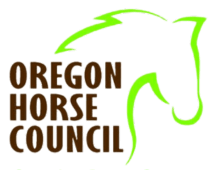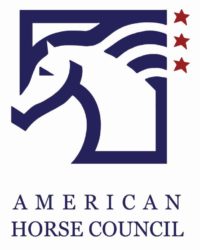Over the course of its 50-plus year history, the American Horse Council (AHC) has conducted numerous National Economic Impact Studies of the US horse industry, with the most recent study completed in 2017. The next study will take place in 2022. The challenges of 2020 and 2021 with the pandemic and its economic impacts on all aspects of our industry make the 2022 study all that more important and necessary.
An economic impact study examines the effect of an event or industry has on the economy and usually measures changes in business revenue, business profits, personal wages, and/or jobs. As a large, economically diverse industry, the United States horse industry contributes significantly to the American economy. Here are just a few of the many ways the AHC National Economic Impact Study is used:
- Educate decision makers/law makers on the economic impact of the equine industry nationally or locally
- Identify trends, and project/forecast indicators when used in conjunction with previous studies
- Pinpoint areas of growth in the industry to foster, and identify gaps that need attention
- Assess the demographics of the industry (age, income levels, etc.)
- Identify the monetary impacts the industry has on a community through tourism, jobs, etc.
- Inform possible decisions regarding business development such as construction or renovation of venues and trails, and determine viability of events
- Provide context to arguments and cases for legal defense, adverse legislation or regulation, or development or expansion that may negatively impact the industry
- Help fight for green space and public lands
Designing and preparing such a large study requires months of advance planning. AHC is now launching Phase 1 and Phase 2 of the preliminary study design.
Phase 1: Sample Size
AHC is asking all equine associations and organizations to provide some basic information to help us determine the best methods/means to reach the audience, determine the total target audience population, and establish a response rate to ensure a statistically valid sample. It all starts with the details – if we meet our metrics for our breakout populations, we can then run a national analysis. For example (these are hypothetical):
- If we want economic impacts for breeds or disciplines (like AQHA or USHJA or USTA), we need to determine the number of responses needed from those groups to get a valid sample. AQHA has 225,000 members so we might need 10,000 surveys from their members to derive their total economic impact as an organization. Smaller populations like Arabians who have 16,000 members might require 6,000 surveys. But imagine the power of being able to definitely say YOUR breed or discipline has X economic impact, employs Y people, etc.!
- If we want data analysis at the state and/or county level, these population sizes can vary greatly and require a larger sample size by proportion to maintain a level of accuracy. That means at a minimum we need to know the number of members in each state to determine responses needed in each state (usually about 20-25% of the total member population for populations less than 100,000 members). This data can be used to help make many arguments for maintaining trails, race tracks or other facilities in a state or combating zoning or other actions that take away land and facilities.
AHC is asking each equine association to PLEASE send the following by April 15:
- Name of your association/organization
- Total number of US members in 2020
- Number of US members by state in 2020 (in an Excel file would be great!)
- Best estimate of the percentage of members by sector (racing, showing, recreational, other)
- Percent of members with email address on file
Phase 2: Fundraising
As AHC and the AHC Foundation (AHCF) are not government subsidized, nor do AHC or AHCF receive any funding through check off programs like some livestock groups, AHC relies on contributions, sponsorships and advertising to fund the study. Details about these opportunities can be found at https://www.horsecouncil.org/economic-impact-study-fundraising/
AHC has compiled Frequently Asked Questions (FAQs) that address why we need this study, what’s included and not included in the study, uses of the study results, why horse owners should complete the survey and other background information which may be found at https://www.horsecouncil.org/economic-impact-study-faq/
AHC will be providing media toolkits to help organizations spread the word about the study and the importance of completing the survey. We anticipate making those available in May 2021.
If you have questions, contact American Horse Council President Julie Broadway at jbroadway@horsecouncil.org
About the American Horse Council
As the national association representing all segments of the horse industry in Washington, D.C., the American Horse Council works daily to represent equine interests and opportunities.

The AHC promotes and protects all horse breeds, disciplines and interests by communicating with Congress, federal agencies, the media and the industry itself every day.

